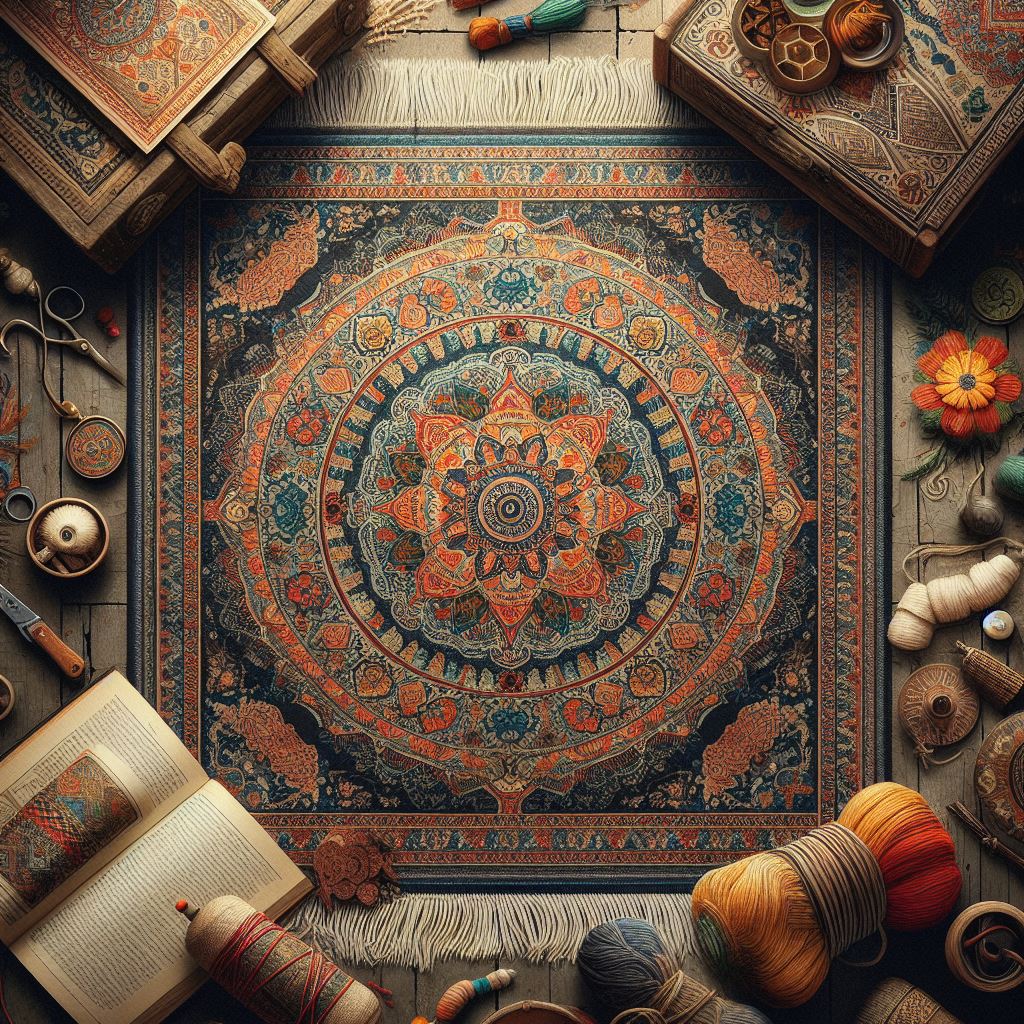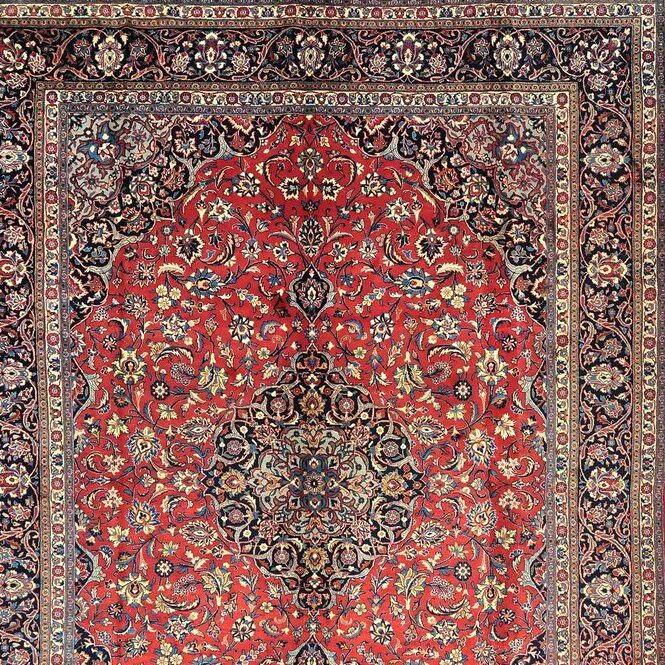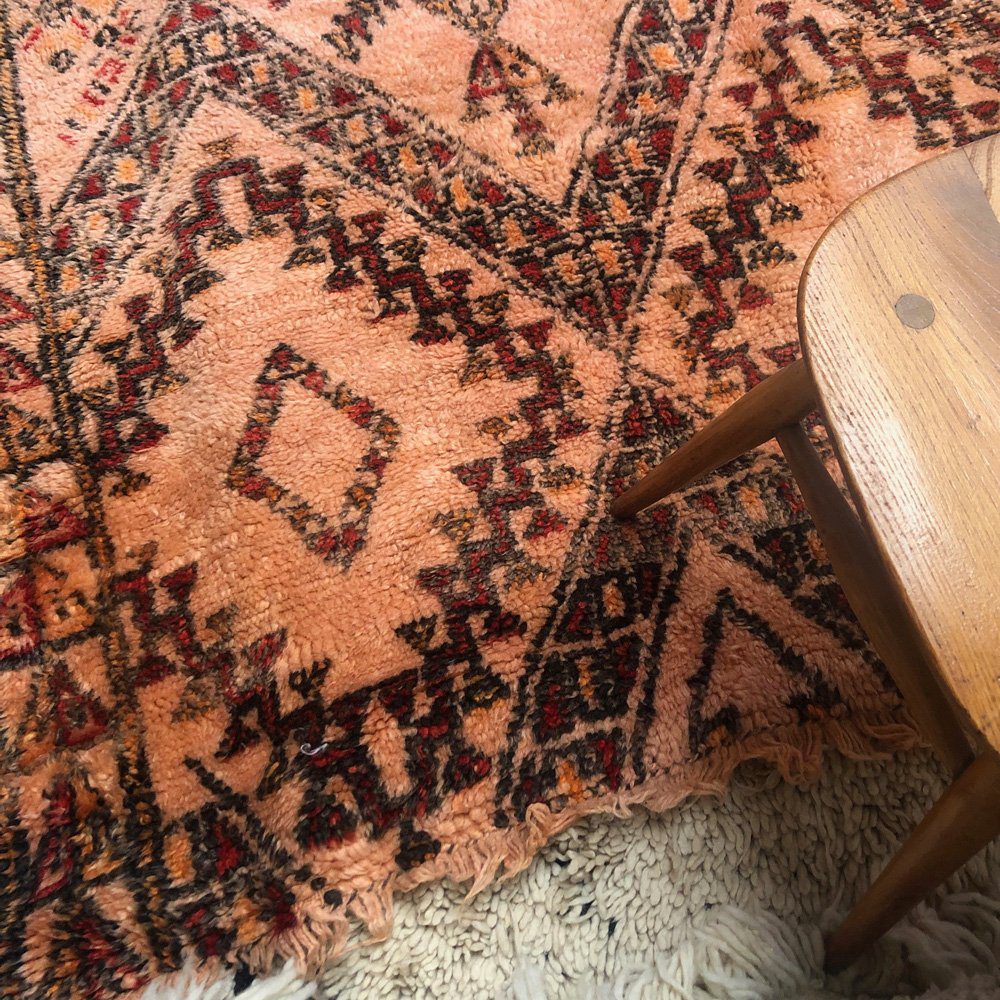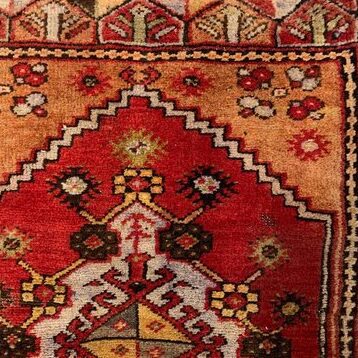The Rich Heritage of Indian Rugs
The tapestry of Indian culture is vividly reflected in the art of rug making, a tradition that dates back centuries and showcases the rich heritage and intricate craftsmanship of Indian artisans.
Indian rugs, known for their vibrant colors, diverse patterns, and exceptional quality, are a testament to the skilled craftsmanship passed down through generations.
Historical Background and Facts of Indian Rugs
The story of Indian rugs is as intricate and colourful as the rugs themselves, woven through centuries of history, culture, and artistry. These textiles are not merely decorative items but carry the legacy of India's past, reflecting the confluence of various civilizations, trades, and artistic influences. The history of Indian rugs is a fascinating journey through time, showcasing the evolution of weaving techniques, designs, and materials that have been passed down through generations.
The Origins of Indian Rug Weaving
Indian rug weaving is an ancient craft, with its origins shrouded in the mists of time. Historical records and archaeological finds suggest that the tradition of weaving in India dates back to the Indus Valley Civilization (3300–1300 BCE), where cotton was spun, woven, and dyed for various purposes. However, the art of rug weaving, as we know it today, began to flourish under the Mughal Empire in the 16th century. The Mughals, influenced by Persian art and culture, introduced sophisticated weaving techniques and intricate designs, elevating rug making to a form of high art.
Mughal Influence and Persian Connections
The Mughal emperors were great patrons of the arts, and under their rule, Indian rug weaving witnessed a renaissance. Persian weavers were invited to India, bringing with them their skills, designs, and motifs. This cross-cultural exchange led to the creation of a unique blend of Indian and Persian styles, evident in the floral patterns, intricate vine work, and detailed figurative scenes found in Mughal carpets. The classic "Persian carpet" design that many associate with high-quality rugs was adapted and transformed in India, leading to the birth of iconic styles such as the Kashmiri carpet.
Regional Variations and Styles
As the craft of rug weaving spread across India, distinct regional styles began to emerge, influenced by local culture, climate, and materials available. For example, Kashmiri rugs are renowned for their soft wool, silk threads, and delicate, floral designs, often inspired by the region's natural beauty. In contrast, rugs from the Rajasthani area are known for their vibrant colours and bold patterns, reflecting the desert landscape and vibrant culture of Rajasthan.
The diversity of Indian rugs is also evident in the variety of weaving techniques employed across different regions. While northern India is famous for its fine woollen and silk carpets, the southern and eastern parts of the country specialize in cotton dhurries and jute rugs, showcasing a different aspect of India's rich textile heritage.

Indian Rugs in the Global Market
The allure of Indian rugs has transcended borders, making them highly sought after in the global market. The British colonial period saw a significant increase in the export of Indian textiles, including rugs, to Europe and the Americas. Today, Indian rugs continue to be celebrated worldwide for their quality, craftsmanship, and beauty. The export of these rugs plays a crucial role in India's economy, supporting the livelihoods of thousands of weavers and artisans across the country.
Preservation of Tradition and Modern Innovations
In recent years, there has been a renewed interest in preserving the traditional methods of rug weaving, recognizing the cultural and historical significance of these practices. Artisans and NGOs are working together to keep these traditions alive, training new generations of weavers and ensuring that the skills developed over centuries are not lost.
At the same time, Indian rug makers are innovating, blending traditional techniques with contemporary designs to meet the changing tastes of the global market. These efforts ensure that Indian rugs not only represent a storied past, but also a vibrant, evolving art form.
Identifying and Caring for Indian Rugs
Owning an Indian rug is like having a piece of history in your home. However, appreciating its beauty comes with the responsibility of proper care and the knowledge to identify authentic pieces.
Popular Designs and Motifs
Indian rugs are renowned for their elaborate designs, which often include floral patterns, geometric shapes, and pictorial scenes. These designs are not only aesthetically pleasing but also hold cultural significance, representing the local flora, fauna, and mythology of the region. Red Indian rugs, known for their vibrant hues, add a bold statement to any room, while large Indian rugs can anchor a space with their intricate patterns and storytelling motifs.
Authenticity and Quality
Identifying authentic Indian carpets can be a challenge for the uninitiated. Traditional Indian carpets are distinguished by their handcrafted details, quality of materials, and the intricacy of their designs. Antique Indian carpets, often sought after by collectors, can be identified by their unique patinas, wear patterns, and the stories behind their motifs.
The quality of Indian rugs, including those made in Kashmir, is often determined by the knot density, the fineness of the weave, and the quality of the materials used. Kashmiri rugs are especially known for their soft wool and silk, intricate designs, and vibrant colours, making them highly coveted pieces.
Cleaning and Maintenance
Caring for an Indian rug requires knowledge and attention to detail. The question of how to clean an Indian rug is common among owners, as improper care can lead to damage. Regular vacuuming, immediate stain treatment, and periodic professional cleaning are essential to maintaining the beauty and longevity of these carpets. It's important to use gentle, rug-specific cleaners and avoid harsh chemicals that can damage the fibres and colours.
Durability and Lifespan
Indian wool rugs are celebrated for their durability. The natural resilience of wool, combined with the traditional hand-knotting techniques, makes these rugs incredibly long-lasting. With proper care, an Indian wool rug can be a beautiful part of your home for decades, gradually becoming more valuable and cherished as an antique.
Joe Rugs - Carpet Expert
Hello! I'm Joseph Rugs, the founder of CarpetJoe.com and your guide through the intricate world of carpets. Born and raised in London with a deep-rooted passion for art and culture, I've explored the globe to bring the rich tapestry of carpet weaving right to your screen. My academic background in arts and humanities from Oxford has fuelled my curiosity, leading me to uncover the stories behind every knot and weave. As a family man, my adventures are shared with my loved ones, enriching our lives with every piece of art we encounter. Join me as we explore the beauty and craftsmanship of carpets together.
Common Types or Rugs
Each type of Oriental rug has its unique charm and story, making them more than just a luxury item; they are a piece of their country's cultural legacy. Collectors and enthusiasts of Oriental and Persian rugs appreciate them not only for their aesthetic appeal but also for their cultural, historical, and artistic significance.

Persian Rugs
Originating from what is now modern-day Iran, Persian rugs are celebrated for their unparalleled craftsmanship and enduring beauty.

Berber Rugs
Originating from the Berber tribes of North Africa, particularly Morocco, this type of carpet is renowned for its rugged texture and resilient nature.

Turkish Rugs
Turkish rugs have a legacy steeped in history and artistry, and have always been a symbol of exquisite craftsmanship and cultural significance.
Frequently Asked Questions
A weave rug refers to a rug made by interlacing threads longitudinally (warp) and laterally (weft). The process can vary from hand-weaving to using looms, producing various textures and patterns.
Iran (formerly Persia) is most famous for its rugs, known worldwide for their intricate designs, superior craftsmanship, and high-quality materials. Persian rugs are considered the epitome of the rug-making art.
The oldest known rug in the world is the Pazyryk carpet, dating back to the 5th century BCE. It was discovered in 1949 in the Pazyryk Valley in Siberia, Russia, inside a Scythian nobleman's tomb that was preserved in ice, which kept the carpet remarkably well-preserved.
The Pazyryk carpet is noted for its sophisticated design, intricate patterns, and fine craftsmanship, showcasing an advanced weaving technique that indicates a long-standing tradition of rug making. This ancient carpet is a testament to the early skill and artistry involved in rug weaving.
The exact origin of rugs is difficult to pinpoint, as the tradition of weaving floor coverings likely arose independently in various regions. However, the earliest evidence of rug weaving comes from the regions that are part of modern-day Iran and the surrounding areas in Central Asia.
These regions are often credited with the development of rug making as an art form, with techniques and designs that have influenced rug making traditions around the world.
The discovery of the Pazyryk carpet suggests that nomadic tribes in Central Asia were among the first to develop the art of rug weaving.
Rugs can be expensive due to several factors, including the materials used, craftsmanship, design complexity, and the time required to produce them. Handmade rugs, especially those made from natural fibres like wool, silk, or cotton, involve a labor-intensive process that can take months or even years to complete, depending on the size and intricacy of the design. The quality of the materials, the skill of the artisans, and the uniqueness of the design also contribute to the value of a rug.
Additionally, antique rugs and those from regions renowned for their rug-making traditions (like Persia) carry historical and cultural significance, making them highly sought after and increasing their market value.


